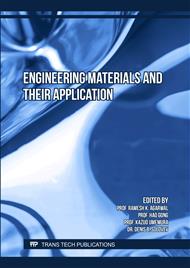p.115
p.127
p.137
p.143
p.149
p.155
p.163
p.169
p.177
Application of a Nonlinear Deformation Model to the Analysis of Complete Moment-Curvature Diagrams of Reinforced Concrete Elements with Reinforcement A500
Abstract:
This article suggests a calculation procedure for the parameters of complete moment-curvature deformation diagrams with a down leg that can be used for the calculations of the multistorey monolithic building frameworks taking into account the specifics of reinforced concrete. To construct complete deformation diagrams for bending elements, a non-linear deformation model is used that is based on using the physical diagrams of the concrete and reinforcements to calculate the inner moments of cross-sections at all loading stages via balance and strain compatibility equations. Using this model, the authors researched complete moment-curvature deformation diagrams for the elements with different percentages of longitudinal tensile reinforcement that changes the bending properties of the structure. We used grade А500 steel as the reinforcement. The parameters of the tensile reinforcement diagram were determined in the tension testing of samples with constant deformation rates. The performed computer tests to calculate the moment-curvature diagram parameters for reinforced concrete beams reinforced with grade А500 efficiency rods and conventional grade A400 reinforcement rods with different longitudinal reinforcement congestion rates helped the authors assess the bending properties of the elements under conditions approaching their destruction and determine their efficient use in the calculations of building frameworks taking into account the redistribution of forces.
Info:
Periodical:
Pages:
169-175
Citation:
Online since:
May 2023
Authors:
Price:
Сopyright:
© 2023 Trans Tech Publications Ltd. All Rights Reserved
Share:
Citation:


